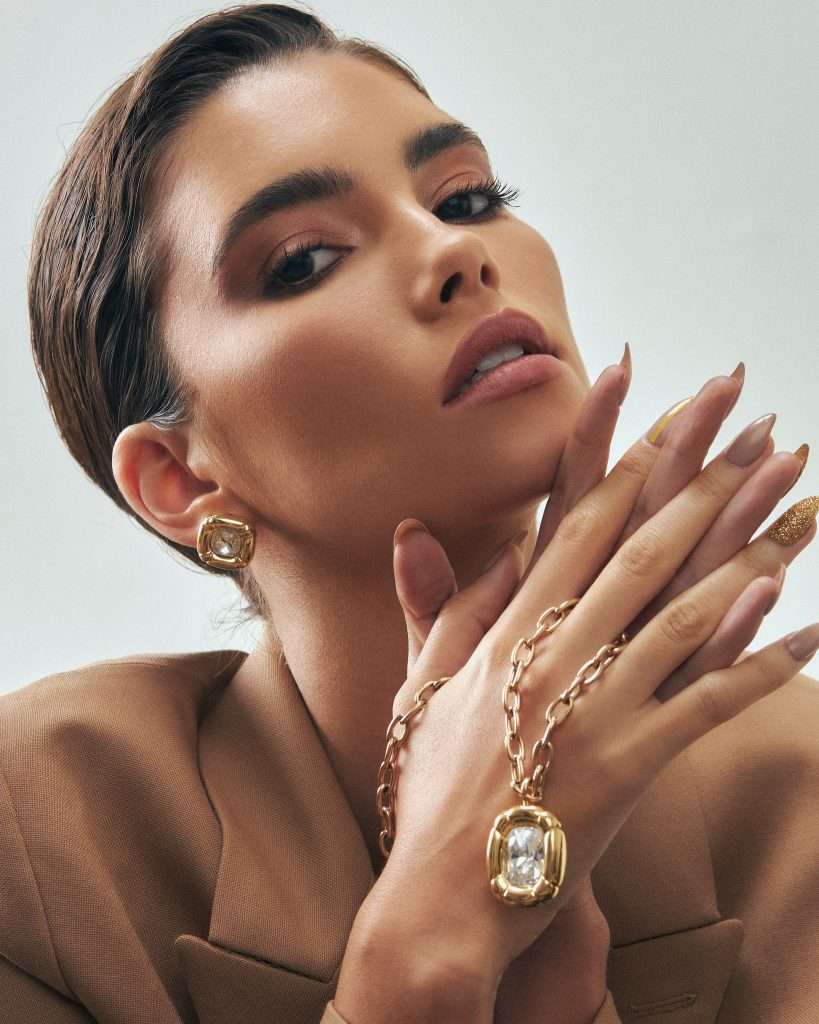Swarovski is synonymous with crystals. But the luxury brand is aiming to be known for something else, too: being a sustainable business.
Daniel Swarovski created his eponymous crystal business in 1895 in Wattens, Austria, with a broad vision: to build a business that cared for its employees, customers, and environment. It’s been 127 years since then, and while the company has never lost sight of that vision, it says it needs to do more—it will do more.
Beginning this year, Swarovski says it will launch at least one sustainable collection per year. By 2030, it says all metals will be sourced from responsibly managed and recycled suppliers.
Under its recently launched Wonderland brand, Swarovski says it’s entering a new era. Wonderland’s aim is to bridge the past and future, “where science and magic meet, and extra and elegance collide.”
Chief among Wonderlab’s directives is to pursue new impact levels through a sustainable lens, detailed in the brand’s sustainability report released late last year.

“We believe that we can more efficiently and holistically respond to these challenges by spreading accountability across our organisation. By ensuring that more people have a stake in the success of our objectives, sustainability becomes woven into the fabric of the whole business,” Swarovski CEO Robert Buchbauer said in the report.
Swarovski is focused on six sustainability initiatives: conscious materials; empowerment and education; waste and circular economy; equality, diversity, and inclusiveness; respect for people; and greenhouse gases.
“More than ever, it is important that we take stock of our business’s place in society and evaluate the contribution we make to it. We cannot return to business as usual,” Buchbauer said in a letter last year pointing to the challenges brought by the pandemic.
“Since our founding in 1895, a love of people and the environment have been integral parts of our DNA,” he wrote. “While over the years we have achieved notable process in addressing the world’s most pressing issues, we recognize this is no longer enough.”
Better business, better products
As of 2019, 35 percent of Swarovski’s energy comes from renewable sources at both manufacturing and water production locations. The brand says it met 76 percent of its water demands in 2018 through recycled sources.
“In striving to use responsibly sourced materials we are following our own cultural values, and we are committed to driving positive change within our industry—inspiring the designers we work with to embrace sustainability through education and material support,” Nadja Swarovski great-great-granddaughter of Daniel Swarovski and former executive board member, said in 2019. Swarovski is certified by the Responsible Jewellry Council.
In its jewelry collections, Swarovski launched lab-grown diamonds in 2016, expanding those into the Atelier Swarovski Fine Jewellery line. It also introduced responsible materials including Fair Trade and recycled gold and responsibly sourced gemstones. In 2019 it launched Swarovski Advanced Crystal, the world’s first lead-free crystal.
In 2015, Swarovski launched the Conscious Design Program, which has provided more than six million upcycled crystals to design schools and designers. It’s also prioritizing female leadership across the company by implementing innovations in recruitment—including AI technology. It says by 2024 Swarovski will be a “bias-free” recruiter.

“It is vital to all those igniting dreams on behalf of Swarovski that their rights are protected, and a healthy work environment is guaranteed,” says the company.
The 2021 report said Swarovski committed to reducing its emissions—both indirect and direct—a 47 percent decrease for internal and 28 percent for emissions outside of its operations. Both targets are aimed at 2030 deadlines. So is the plan to transform operations and go 90 percent landfill-free. Swarovski says of that, 70 percent of waste will be recycled or repurposed.
Internal lifecycle assessments have helped Swarovksi outline an innovation roadmap, the brand says. It’s looking at its entire value chain from mining raw materials to disposal for products at the end of their life cycles. A focus on innovations will help Swarovski double its materials efficiency also by 2030. All packaging will be sustainable or recyclable by 2030 as well.
“Our refreshed sustainability strategy marks a new starting point, not the finish line,” says Buchbauer. “It’s our line in the sand, defining a major transformation in the way we tackle sustainability challenges.”


